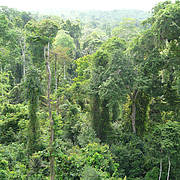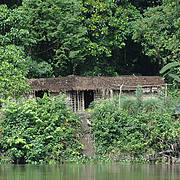Restoring world’s forests proven to boost local economies and reduce poverty
08 September 2012 | International news release
Jeju Island, Republic of Korea, 8 September 2012 (IUCN). A 5-year programme to restore forest landscapes in 23 countries in Africa, Asia and Latin America has demonstrated their crucial role in creating jobs and boosting incomes for local residents.
Implemented between 2007 to 2011 by the IUCN (International Union for the Conservation of Nature) with the support of the Netherlands government, the Livelihoods and Landscapes strategy was designed to strengthen the resilience of forest landscapes and produce income-generating resources that would have a lasting impact on people’s lives.
“The Livelihoods and Landscapes strategy has made a real difference to forest-dependent households across different landscapes,” says Chris Buss, Senior Programme Officer of IUCN’s Global Forest and Climate Change Programme. “In doing so, the programme has exploded the myth that forests serve only as an economic safety net for the poor. On the contrary, they can be crucial in boosting livelihoods for all social classes and their value should be given serious consideration during national and local policy-making.”
In Miyun, China, local incomes increased by an estimated 50% thanks to an influx of tourists following extensive forest restoration, while the number of residents living in poverty halved to under 15%. In addition to helping improve cash incomes, the programme also succeeded in boosting food and fuel supplies in the area. As a result, the Beijing government has now recommended forest landscape restoration to be implemented across the Miyun Watershed, which delivers 80% of Beijing’s water. Similar successes were seen across many other countries where the LLS programme was active.
“A tailor-made set of initiatives was developed for each landscape according to conditions on the ground,” says José-Arturo Santos, IUCN Rights and Environmental Governance Regional Coordinator, Mesoamerica and Caribbean Initiative. "Common approaches, however, included the negotiation of local access rights, support for locally-controlled forest management and the development of income generating activities.”
The programme also achieved some important policy successes by fostering increased support for healthier landscapes: in Rwanda, for example, the government has announced its commitment to border-to-border ecosystem restoration by 2035.
Through this work IUCN has estimated that locally-controlled forestry provides developing country households with livelihood benefits worth around $130 billion a year, greater than the value of the gold reserves of France and Switzerland combined and approximately equivalent to total annual Overseas Development Aid (ODA).
“Countries need to recognize the true value of forests, placing it at the heart of development policies and not as just an afterthought,” says Buss.
For more information or to set up interviews, please contact:
Brian Thomson, IUCN Media Relations, m +82 10 2150 7308, m +41 79 721 8326, email brian.thomson@iucn.org
Maggie Roth, IUCN Media Relations, m +82 10 2150 8732, m +41 79 104 2460 email maggie.roth@iucn.org




